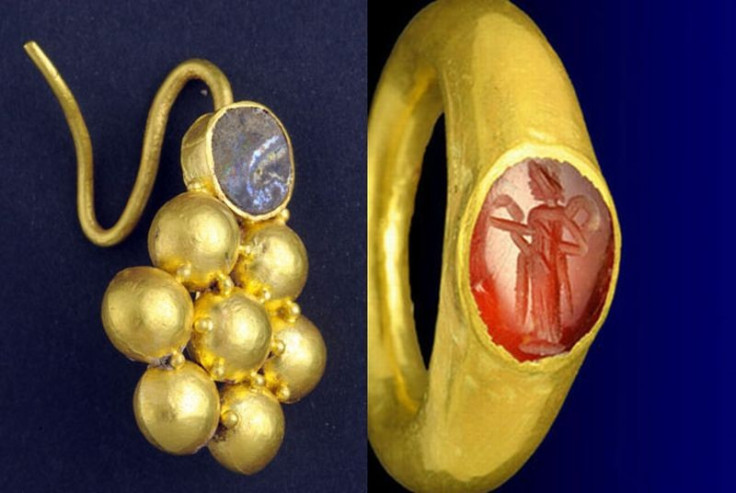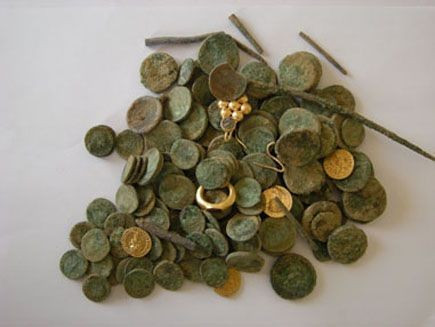2,000-Year-Old Roman Gold and Silver Coins, Jewellery Found in Southern Israel [PHOTOS]
A treasure trove of silver and gold coins and gold jewelleries, probably hidden by its owner 2,000 years ago, was recently uncovered at an excavation site near the Israeli town Kiryat Gat, south of Tel-Aviv.

The hoard, wrapped in a cloth, was discovered during the course of excavation of a building dating to the Roman and Byzantine period, archaeologists at Israel Antiquities Authority (IAA) undertaking the excavation announced in a statement last week.
It consists of about 140 gold and silver coins and a few exquisite gold jewellery pieces like earrings and a ring.
"The magnificent hoard includes gold jewellery, among them an earring crafted by a jeweller in the shape of a flower and a ring with a precious stone on which there is a seal of a winged-goddess, two sticks of silver that were probably kohl sticks, as well as some 140 gold and silver coins," IAA's archaeologist and the excavation director Emil Aladjem said.
The gold and silver coins that were discovered are adorned with the images of Roman emperors and Roman Gods, which indicate that they belonged to the Roman period.
"The coins date to the reigns of the Roman emperors Nero, Nerva and Trajan who ruled the Roman Empire from 54-117 CE. The coins are adorned with the images of the emperors and on their reverse are cultic portrayals of the emperor, symbols of the brotherhood of warriors and mythological gods such as Jupiter seated on a throne or Jupiter grasping a lightning bolt in his hand," Aladjem added.

According to archaeologists, the artifacts also point towards their connection with the Jewish Bar Kokhba Revolt against Roman rule between 132-135 CE, and was probably hidden by a wealthy woman at the time of an impending danger during the revolt.
"The composition of the numismatic artifacts and their quality are consistent with treasure troves that were previously attributed to the time of the Bar Kokhba Revolt . This is probably an emergency cache that was concealed at the time of impending danger by a wealthy woman who wrapped her jewellery and money in a cloth and hid them deep in the ground prior to or during the Bar Kokhba Revolt. It is now clear that the owner of the hoard never returned to claim it," IAA archaeologist Sa'ar Ganor said.
"During the uprising, between 132-135 CE, the Jews under Roman rule would re-strike coins of the emperor Trajan with symbols of the revolt. This hoard includes silver and gold coins of different denominations, most of which date to the reign of the emperor Trajan," Ganor added.
© Copyright IBTimes 2025. All rights reserved.




















